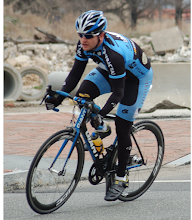Watts/kilogram is really most important when you're dealing with climbing on the bike It's what makes riders like Nairo Quintana so strong in the mountains: tiny little guys with large power outputs relative to their body weight. Since the State TT has a fair amount of climbing, it's a concern for someone like me who will never be that small. I need to be able to climb pretty quickly.
Wattage is the amount of force that I can put into the pedals for any given period of time (in my case, the goal is 58 minutes). Most of my training is focused on increasing the amount of power that I can sustain for an hour (it's an hour race, so it seemed like the way to go!)
As I mentioned last week, I'm trying to lose just a little weight. There is such a thing as losing too much weight. If I dropped from my current 175 pounds to 140 pounds (which many of my competitors are), I would have to lose significant muscle mass, which would probably cause my power output to drop (assuming that I could do it at all). I was 164 pounds in my highly successful 2013 season and I'm trying to get back to that.
To go fast on flat roads, I need a high wattage. To go fast on climbs, I need both a high wattage and a low body weight.
Both numbers have time limits on them. You can only get so much fitter and only lose so much weight in any given amount of time (especially if you're trying not to lose performance).
So I set this target of 4 watts/kilogram, but there are lots of ways to get there. Below is a chart with various weights, their kilogram conversions, and how many watts I would need to maintain to get 4 watts/kilogram. You'll see right away that "4 w/kg" is not a very specific target on its own:
| Pounds | KGs | watts |
| 175 | 79.5 | 319 |
| 174 | 79.1 | 317 |
| 173 | 78.6 | 315 |
| 172 | 78.2 | 314 |
| 171 | 77.7 | 312 |
| 170 | 77.3 | 310 |
| 169 | 76.8 | 308 |
| 168 | 76.4 | 306 |
| 167 | 75.9 | 304 |
| 166 | 75.5 | 303 |
| 165 | 75.0 | 301 |
| 164 | 74.5 | 299 |
| 163 | 74.1 | 297 |
| 162 | 73.6 | 295 |
| 161 | 73.2 | 293 |
| 160 | 72.7 | 292 |
| 159 | 72.3 | 290 |
| 158 | 71.8 | 288 |
So I have some choices. I was aiming for 164 pounds and 300 watts. I could also aim to gain more wattage (not very likely) and not lose as much weight or lose more weight so I don't have to put out as much power (which could be a possibility if I'm behind schedule on gaining power).
Like many things in training, there's more than one way to get there.
Of course, watts/kg isn't the only aspect of time trailing, but this far out it's the one that I'm most focused on.
